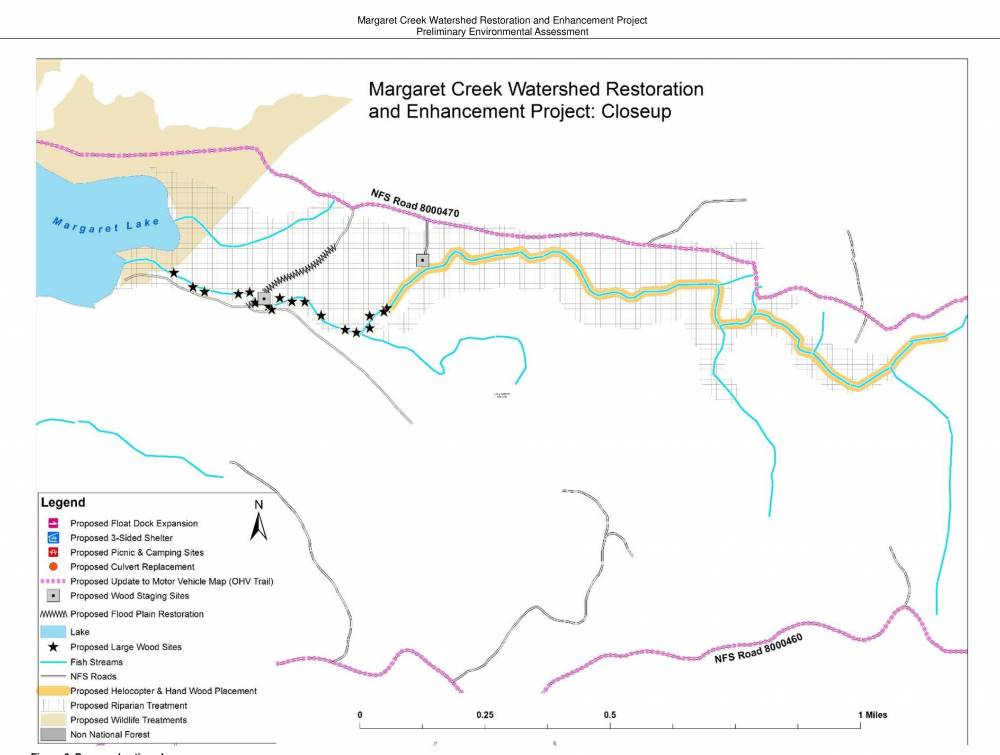
The U.S. Forest Service has a plan to improve parts of the Margaret Creek area, a popular recreational site near Ketchikan.
The plan includes stream improvements, enhanced recreational opportunities, invasive plant treatment and improved wildlife habitat.
According to the preliminary environmental assessment, Margaret Creek is important for various salmon and trout species. But, the creek lacks the structure to maximize fish habitat potential.
The proposed alternative would place wood pieces in the stream to create better spawning areas.
The proposal also calls for new campsites, picnic areas, interpretive kiosks and a shelter. The Margaret Bay dock would be expanded by adding a 50-foot float to the existing structure.
Invasive plants found in the area include purple foxglove, oxeye daisies, St. Johnswort, hairy cat’s ear and reed canarygrass. The proposed alternative would remove these through a combination of hand-pulling, mowing and herbicides. Herbicide treatment would be limited to aminopyralid, according to the proposal.
Written comments will be accepted for the multi-year Margaret Creek Restoration and Enhancement Project through May 15.
The public can send comments through facsimile, by hand, or electronically:
- Fax hardcopy written comments to: Margaret Creek Restoration Project, District Ranger, Ketchikan Misty Fjords Ranger District; Fax: (907) 225-8738
- Hand-deliver written comments during business hours Monday through Friday, 8 a.m. to 4:30 p.m., excluding holidays to 3031 Tongass Avenue Ketchikan, Alaska 99901
- Submit electronic written comments in plain text (.txt), rich text format (.rtf), or word (.doc) to: comments-alaska-tongass-ketchikan-mistyfiord@fs.fed.us. Please include Margaret Creek Restoration Project in the subject line.
What to include in comments:
- The project title, Margaret Creek Restoration Project
- Commenter’s name
- Commenter’s current physical mailing address
- Commenter’s organization name if commenting as a representative
Please be aware that names and contact information submitted with comments become part of the public record and may be released under the Freedom of Information Act.
The assessment and supporting information can be downloaded from the project website at: https://www.fs.usda.gov/project/?project=51782.
This report has been updated to correct an error.








